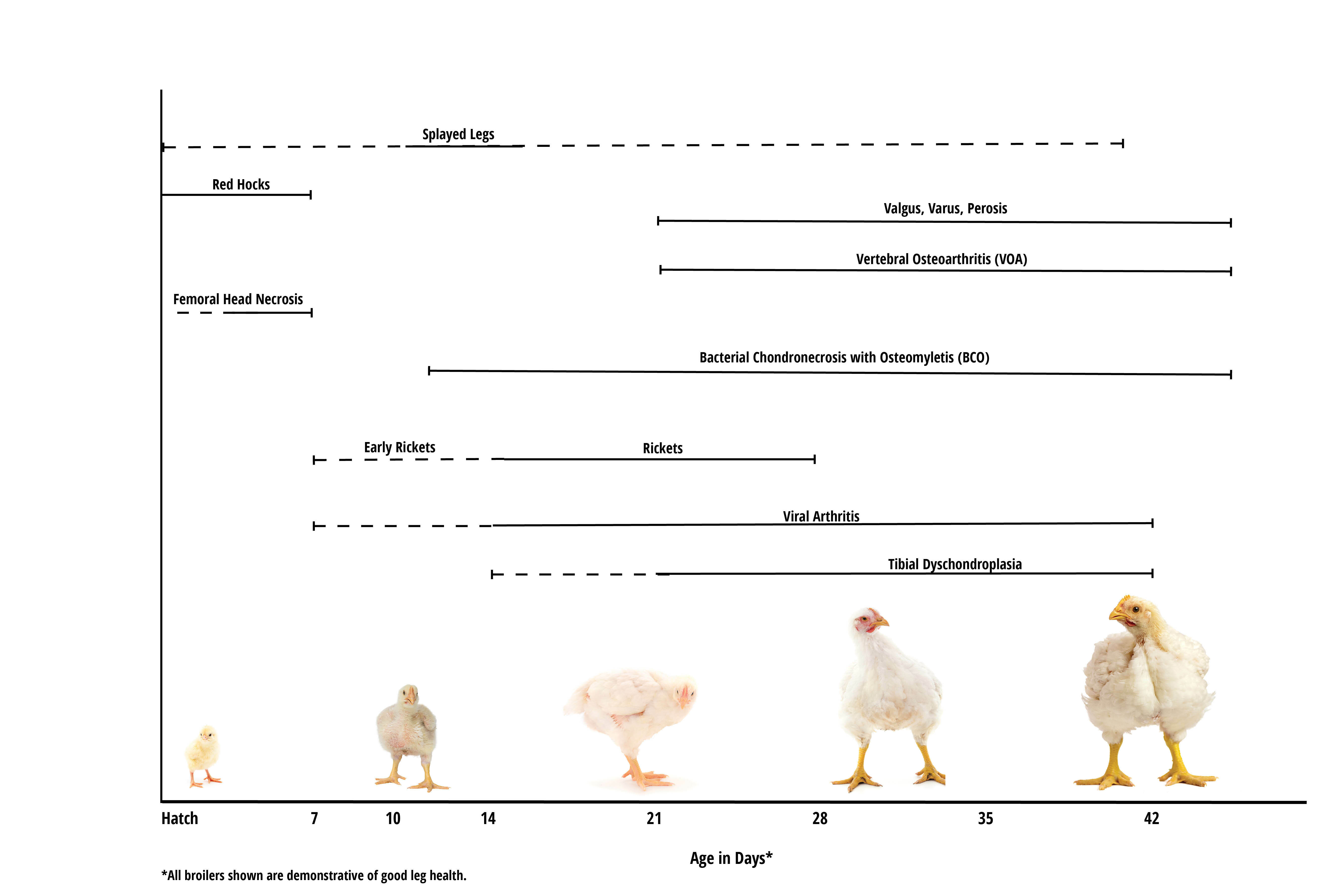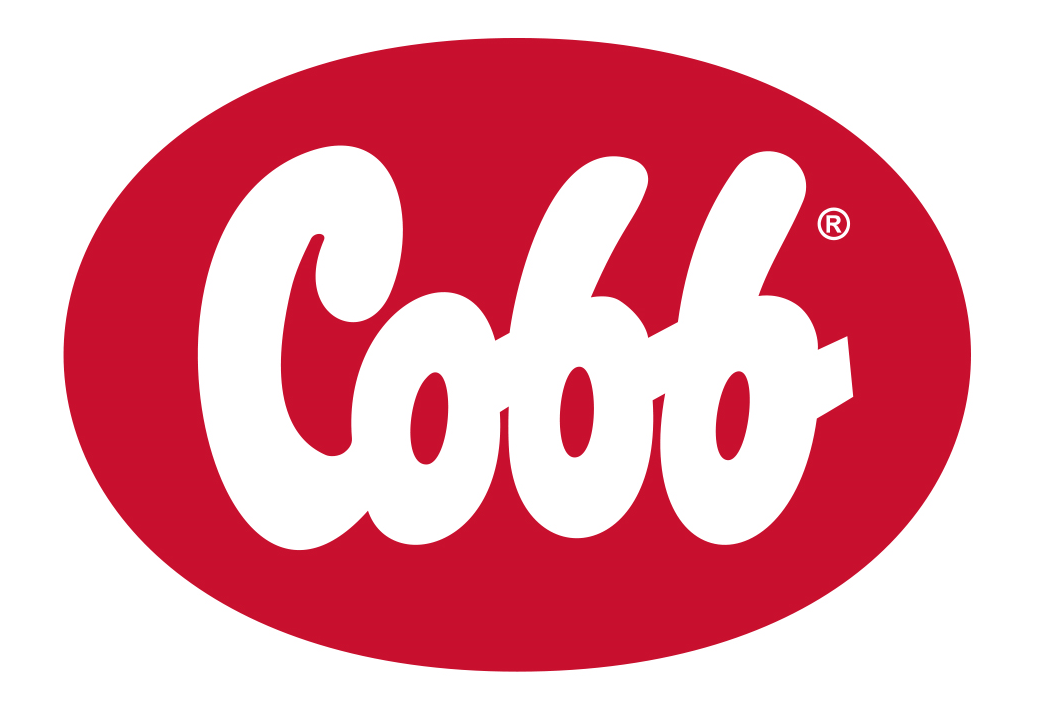



Supporting good leg health in broilers
Causes and prevention methods of leg problems in broilersIntroduction
When building a house, the foundation is the most critical part. If the structure of the concrete is compromised, the walls won't be stable, leading to wall cracks. Similarly, the skeleton represents the foundation of the body, and the bones must be strong to support the entire body, particularly the muscles.
Strong foundations for good health and welfare outcomes.
To build the best foundations, consider the characteristics of bone development:
- Mineralization takes six times longer during the first 10 days (first week) than any other period of the broiler's life.
- Compared to 40 years ago, modern broilers grow twice as fast, and breast meat yield has doubled. However, mineralisation has kept the same pace as a few decades ago. New concepts, such as a higher phosphorous level at an early age, can help bone mineralisation and improve bone strength.
- Mineralisation in fast-growing broilers is imperative to support muscle mass as trauma can lead to microfractures. Unfortunately, microfractures can be challenging to diagnose and are typically not detectable through necropsy or X-rays. In humans, such conditions are commonly diagnosed through MRI or CT scans.
Animal welfare plays a role in preventing lameness which includes:
- Handling – The drop distance in the hatchery during unloading and at the farm should be less than twice the bird's height (maximum of 15 cm).
- Location – Place birds to ensure good feed and water intake. Check brooding temperature, cloacal temperature, feed intake (40 g/bird), and water quality and availability.
- Strategy - A stable floor promotes better recovery and does not aggravate bone injuries, promoting movements essential for bone development. Consider that the experimental model to reproduce Bacterial Chondronecrosis with Osteomyelitis (BCO) experimentally is a wire floor.
Some causes of leg issues
- Infectious diseases including Bacterial Chondronecrosis with Osteomyelitis (BCO) caused by Enteroccus caecorum, E. coli, or Staphylococcus. Vertebral OsteoArthritis (VOA) caused by Enterococcus caecorum. Femoral Head Necrosis (FHN) caused by Enterococcus caecorum, Staphylococcus, or E. coli. Viral arthritis and Mycoplasma infections can also impact leg health (Figure 1).

- Splayed legs, from 10 to 20 days old, can occur due to excessive heat at the end of hatching and rough handling in the hatchery, at placement, or transportation.
- Nutritional issues causing rickets, subclinical rickets, or Tibial Dyschondroplasia can also impact leg health, but the diagnosis relies on checking the growth plates for lesions. Note that subclinical rickets are challenging to diagnose, and histopathology may be helpful.
- Leaky gut due to compromised tight junctions caused by feed quality or diseases. In this case, pathogens take over the commensal bacteria (this is frequent after coccidiosis outbreaks or necrotic enteritis, heat stress). As a result, pathogens (viruses, bacteria) and toxins can freely cross the gut barrier. Bacterial translocation leads to bacteriemia and can increase susceptibility to infections, especially at the distal part of the bones (BCO, VOA, HFN).
Nutritional points and pillars of excellent mineralisation
- Calcium (Ca) and phosphorus (P) are the macro minerals involved in bone mineralisation and development. The general level of calcium in broiler feed is around 0.65% to 0.95%, and available phosphorous (AvP) is around 0.36% to 0.58%. Young birds require higher levels of Ca and AvP in the feed for bone mineralisation. The major sources of Ca and P that are widely used are limestones and rock phosphate (MCP :Mono calcium phosphate, MDCP: Mono di calcium phosphate and DCP: Dicalcium phosphate).
- The imbalance of calcium and phosphorus in the diet can reduce the absorption efficiency of both and impact bone development.
- Vitamin D is a fat-soluble vitamin that promotes calcium and phosphorous absorption. The level of vitamin D3 in broiler feed is around 4000 to 5000 KIU/kg feed. Vitamin D is converted to D3 by the liver and the kidneys (Figure 2). If the broiler has liver or kidney issues, it can impact vitamin D3 metabolism and, in turn, calcium and phosphorous absorption.

- Phosphorous is released by the digestion of phytate which is found in plant ingredients. Enzymes supplemented in the feed are required to release the phytase. In its native form, phytate can bond with other nutrients including calcium and amino acids rendering them unavailable for absorption (Figure 3). About 60 to 70 % of phosphorus is in the phytate form, making enzyme supplements necessary to release the phosphorus for absorption.

Other potential points affecting the mineralisation
- Heat stress reduces feed intake as broilers consume less feed during heat exposure to reduce metabolic heat production. Not only is feed intake reduced, but it also increases the respiratory rate. The increased respiratory rate can decrease blood carbon dioxide and increase blood pH (alkalosis), decreasing blood-ionised calcium.
- Heat stress also suppresses the immune system making the bird susceptible to diseases that can cause lameness.
- Moreover, heat stress also reduces the synthesis of vitamin C in broilers. Vitamin C is a water-soluble vitamin that is involved in vitamin D metabolism.
- Mycotoxins are the potential factor that can reduce nutrient use. Some mycotoxins can damage the liver interfering with vitamin D metabolism. Since D3 promotes Ca uptake, a reduction in D3 can, in turn, reduce Ca uptake.
Monitoring programs are critical to ensure strong foundations.
Quality assurance (QA) and Quality Control (QC) in feed mills are the systems to ensure that broiler feeds contain the correct formulation. The monitoring program must begin from incoming raw materials until finished feeds are delivered to the farm.
- Mycotoxins – Monitor risky ingredients for mycotoxins monthly.
- Vitamin premix and phytase enzymes - Check the certificate of analysis (COA) in every incoming lot.
- Oil sources - Check for rancidity to prevent deterioration of fat-soluble vitamins in feed.
- Ca and P - Ca and P should be monitored in every lot of incoming ingredients, particularly limestone and rock phosphate. The different sources of rock phosphate also have different levels of available phosphorus. In general, MCP has higher available phosphorous than MDCP and DCP. should be monitored regularly.
- Phytase - Uniformity and recovery (particularly powder phytase) should be checked.
- Mixer efficiency - Testing must be scheduled at least once a year, and % CV should be less than 10%.
- Moisture in feed – Control the moisture in every production lot (less than 12 to 13%) to prevent mould growth.
Conclusion
The main emphasis is that the first week of life holds immense significance for bone development. To prevent lameness in early age of broilers, consider the following
- Excellent raw materials and feed mill monitoring:
- Low levels of mycotoxins and toxin binders in the first week's feed
- Phytase recovery
- Mixer efficiency
- Calcium/Phosphorus ratio. The ratio should be around 1.6-1.7 (Ca=0.96% & Ph=0.58%).
- Applying welfare recommendations, ensuring optimal feed and water intake, preventing heat stress and stable floors.
- Focusing on disease prevention and good management at the hatchery and farm.











